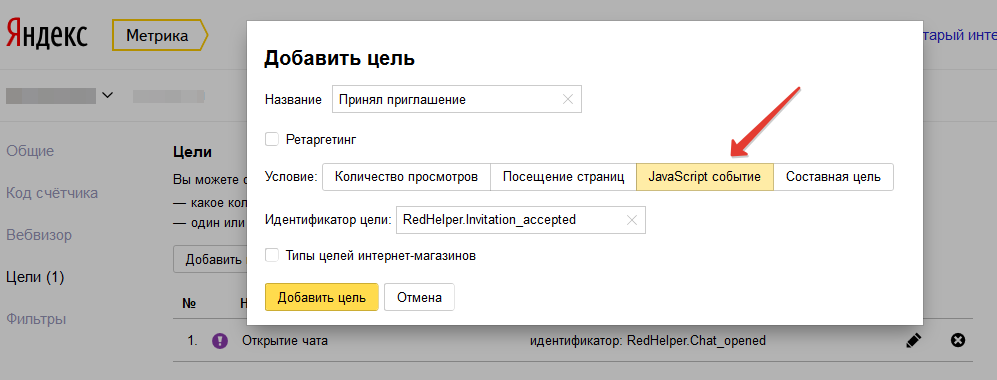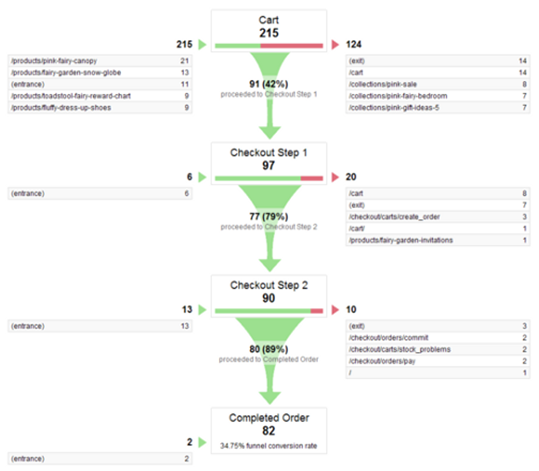How to find out what customers want from your site?

When working with RedHelper online consultant or RedConnect callbacks, many of our customers are confident that they can only answer questions from visitors.
In fact, it is not. From conventional widgets to increase conversion and sales, our services have long grown into a powerful cloud-based business solution that allows you not only to communicate with visitors, but also to collect a huge array of statistical data that allows you to understand - what does a visitor need from your site? And what to do to change the situation for the better?
')
In this article, we will describe how to integrate metrics tracking systems (Yandex.Metrica and Google Analytics) with our online consultant and callback, as well as what benefits it will give you.
How to integrate an online consultant in Yandex.Metrica and Google Analytycs
This is necessary, at a minimum, in order to track the conversion — what percentage of visitors performed a targeted action with a chat or callback. This is the most important characteristic for conducting A / B tests - sometimes just changing the text on the badge can increase the number of calls by 30-40%.
But the most interesting thing begins after you have set up all these goals, and we will tell about it below.
Setting goals in Yandex.Metrica
Events in Yandex.Metrica should be added manually in the metrics personal account. This is done in the "Settings" and then "Goals". In this case, as a condition, select the JavaScript event:

Event list for RedHelper online consultant:
| RedHelper.Invitation_shown | invitation is shown to the visitor |
| RedHelper.Invitation_accepted | invitation accepted |
| RedHelper.Invitation_rejected | invitation declined |
| RedHelper.Chat_opened | the visitor opened the chat (sent no more than 1 time per page) |
| RedHelper.Chat_started | the visitor began a dialogue (began to write messages) |
| RedHelper.Badge_shown | The badge appeared on the site (or the custom button was initialized) |
Event list for Redconnect callbacks:
| RedConnect.popupOpened | A popup call order is shown to the visitor |
| RedConnect.popupClosed | The visitor clicked on the popup (pop-up window) button. |
| RedConnect.widgetClosed | the visitor turned the widget “button over the site" |
| RedConnect.callOrdered | the visitor ordered the call |
Setting goals in Google Analytics
If Google Analytics is already on your site, statistics for RedHelper and RedConnect will appear in it automatically.
Events are located in the Behavior -> Events -> Top Events section, then the RedHelper and RedConnect categories at the bottom of the screen.

List of available events for RedHelper:
- Badge shown - successful initialization of the standard or custom chat button on the page (also means the successful launch of the chat script as a whole)
- Invitation shown - the active invitation is shown.
- Invitation accepted - active invitation accepted
- Invitation rejected - active invitation rejected
- Chat opened - the visitor opened the chat by clicking on a badge or a custom badge.
- Chat closed - the visitor turned the chat
- Like - the visitor has positively estimated the work of the operator
- Dislike - the visitor negatively evaluated the work of the operator
- Message sent - the visitor clicked to send the message (or clicked Enter in the chat)
And for RedConnect:
- popupOpened - the popup (pop-up window) of the call order is shown to the visitor
- popupClosed - the visitor has clicked on the popup button to close
- callOrdered - the visitor turned the “button above site” widget
- widgetClosed - the visitor ordered the call
Google Tag Manager (GTM)
If you integrate the Google Analytics code via the GTM tag, no additional configuration is required either - all data will be saved automatically.
If using Google Tag Manager events are not transmitted, you need to do the following:
- Go to the tag settings and find the section "Advanced Settings", then - "Advanced Configuration". Here you need to put a tick in front of the option "Name of the tracker", while the field next to it should remain empty.
- In the same window, it is recommended to include “improved link attribution”.
View user search queries
Just to see how people came to your site is not enough. You need to know which of the queries most often lead to the target action. This helps to properly distribute the advertising budget and bring more "warm" customers.
And here the goals set are indispensable.
It is known that both Google and Yandex encrypt the content of search queries of their users from third-party services. Therefore, to study the queries left in the search engine by clients, you need to use a tool such as metrics.
Using this instruction, you can check which queries interested visitors who ordered a call or started a dialogue in a chat. Approximately according to the same scheme, you can check the conversion of the goal for other metric values (individual pages, sources of access to the site, etc.).
For Yandex.Metrics:
- Select the Reports section -> Search phrases;
- In the report settings, select "Metrics" and one of the created goals, as in the example below:

- The resulting report will contain a conversion for the selected event (in the example - RedHelper.Chat_started) and a list of search queries.
For Google Analytics:
- Select the section Traffic Sources -> AdWords -> Search Queries;
- In the report settings, select "Conversion" and one of the created goals, as in the example below:

- The resulting report will contain the conversion of the selected event (in the example - RedHelper.Badge_Shown) and a list of search queries.
Composite goals
The composite goal is a path of several steps that a client must go through in one session on the site. Composite objectives are useful in cases where it is necessary to trace the conversion in strictly specified conditions. For example: how many customers who have already arranged delivery, needed additional advice on the chat.
For Yandex.Metrics:
- Select the section "Settings", then "Goals";
- Indicate “Compound Goal”. For each condition, specify the step name and event ID.
- An example of a configured composite goal is in the screenshot below:

For Google Analytics:
In Google Analytics, another work logic - manually creating a consistent chain of goals will fail. But you can use for the same purpose ready-made tools section "Conversions".
To do this, you must still create goals RH and RC manually. The list of available targets has already been presented above.
The data on the collected targets will be available in the Conversion report -> Goals -> Visualization of sequences:

And that's not all.
Redhelper and RedConnect were originally created as cloud services with a powerful statistical component. What other interesting data can be obtained using the system of counting metrics, API, and internal reports of the system, we will tell in our next articles - subscribe, so as not to miss useful information.
But now you can independently come up with several ways in which you can use the functionality available in the online consultant in a non-standard way. To do this, just look at the problem from a slight angle;)
Source: https://habr.com/ru/post/294574/
All Articles